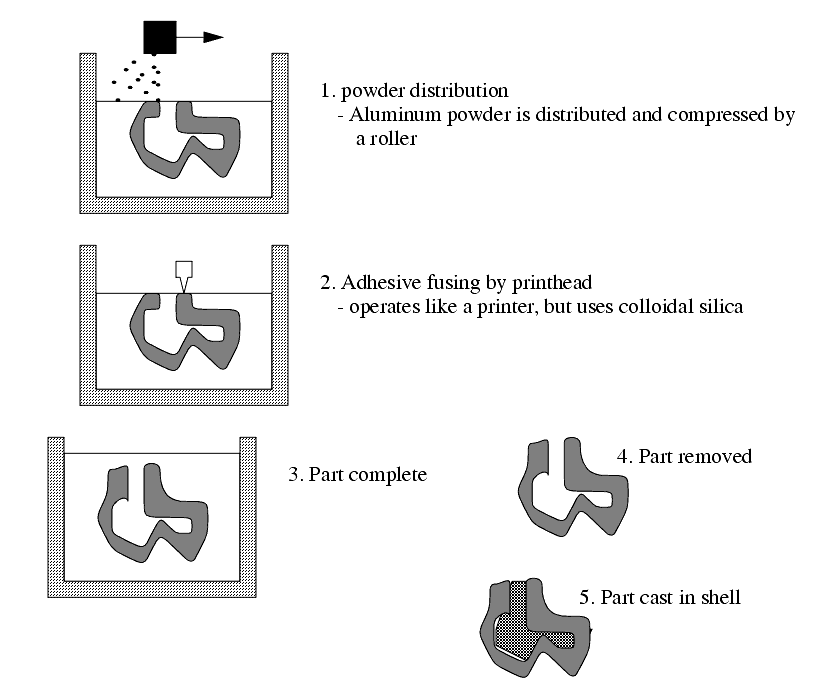66.8 DIRECT SHELL PRODUCTION CASTING (DSPC)
������������
Invented by Emanuel Sachs 1989 at MIT
marketed by Soligen
Basic process,
1. layer of powder is deposited, spread, and compressed on a pallet.
2. The material for the slice is fused using a print head that moves in a raster and sprays adhesive in required spots.
the unfused powder is not removed, and thus supports the rest of the part
when complete the powder is removed and reused
the result is a shell that can be used in casting. Therefore these parts often include the gating required for the metal flow.
advantages,
- produces good castings directly
- the variety of usable common powders is large (using about 320 grit)
- allows tests using metal parts for strength and fit
- eliminates costly time consuming intermediate stages to casting
- can produce very complicated molds
- the mold can be removed from cavities after molding by using a caustic bath. (the rest is simply smashed off)
- many parts can be made at once
- no warping or distortion
- it is faster to spray adhesive than fuse/cut with laser
- final materials only limited by casting
disadvantages,
- rough surface finish: details down to 0.175mm; tolerance +/- 0.05mm
- unbound powder can clog in hidden cavities
- the printing jet tends to clog.
- not commercially available yet
work volume is 8" by 12" by 8"
resolution of print head 0.007"
cost for alpha machine $200,000US
Expected machine in 1994 is,
- 9 to 20 hours for build



